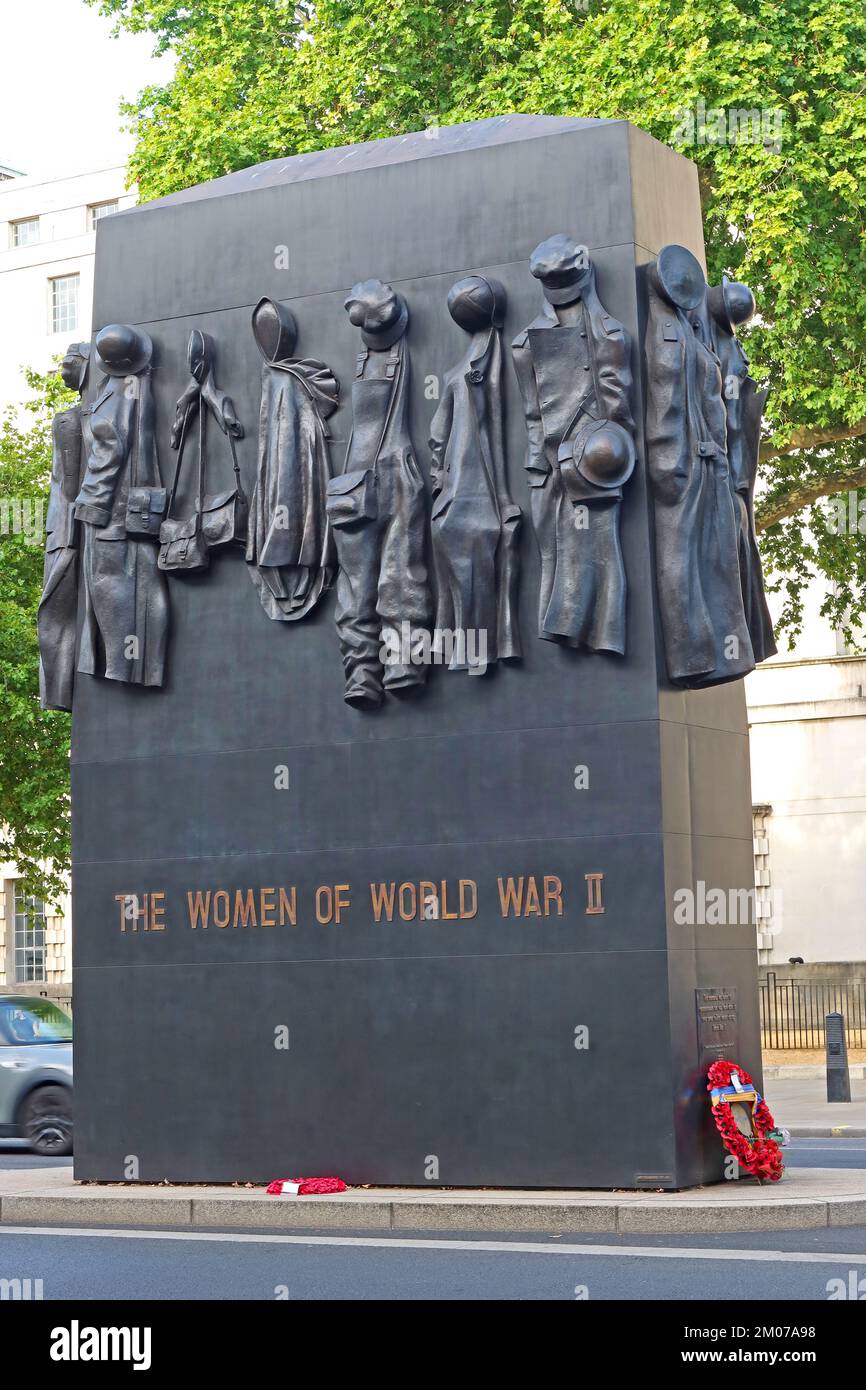Women Of World War II ,memorial in Whitehall , Westminster, London, England, UK, W1, from 2005

Image details
Contributor:
Tony Smith / Alamy Stock PhotoImage ID:
2M07A98File size:
52.9 MB (2.4 MB Compressed download)Releases:
Model - no | Property - noDo I need a release?Dimensions:
3512 x 5269 px | 29.7 x 44.6 cm | 11.7 x 17.6 inches | 300dpiDate taken:
23 July 2022Location:
Whitehall, Westminster, London, England, UK, W1More information:
Remembering the 7 million women who contributed to the war effort by working in hundreds of vital jobs This huge, bronze monument memorialises the women of World War II. It was unveiled in 2005 and the gold lettering on it is said to mimic the font of wartime ration books. Around the outside, you can see 17 different sculpted uniforms and helmets. These uniforms represent hundreds of vital jobs undertaken by over 7 million women during the Second World War. However, when the war ended and the men returned to their jobs, women were forced to quietly hang up their uniforms and resign; they were expected to return to their lives before the war, often in more domestic roles. Women’s contribution to both the First and Second World Wars have often been historically overlooked. Unlike men, most women were not on the front line, and instead worked on the land, they were called up to be mechanics, engineers, munitions workers and air raid wardens. Women drove buses and fire-engines. However, there were over 640, 000 women in the armed forces during World War II including the Women’s Royal Naval Service (WRNS). Lilian Bader joined the Women’s Auxiliary Air Force (WAAF) and trained to be an Instrument Repairer; in fact, she was one of the first women to qualify in that post. She became a Leading Aircraftwoman at RAF Shawbury and was then promoted to Acting Corporal. Women like Georgina Masson, pictured below, joined the Auxiliary Territorial Service (ATS) which was the women’s branch of the British army. Georgina, who was born in Oxford, travelled to Trinidad where she worked as a stenographer for Ford. However, she returned to Britain in 1943 to assist the war effort, and became the first black woman Officer in the ATS. Georgina can be seen holding a copy of Picture Post magazine which features her on the cover, dressed in her ATS uniform.